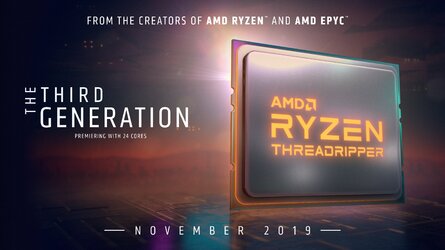- Joined
- Dec 19, 2012
Here's the "official" word from AMD on 3950 X and Threadripper which launches with 24 Cores

Hi Everyone,
We are focusing on meeting the strong demand for our 3rd generation AMD Ryzen processors in the market and now plan to launch both the AMD Ryzen 9 3950X and initial members of the 3rd Gen AMD Ryzen Threadripper processor family in volume this November. We are confident that when enthusiasts get their hands on the world’s first 16-core mainstream desktop processor and our next-generation of high-end desktop processors, the wait will be well worth it.
Thank you
AMD Corporate
